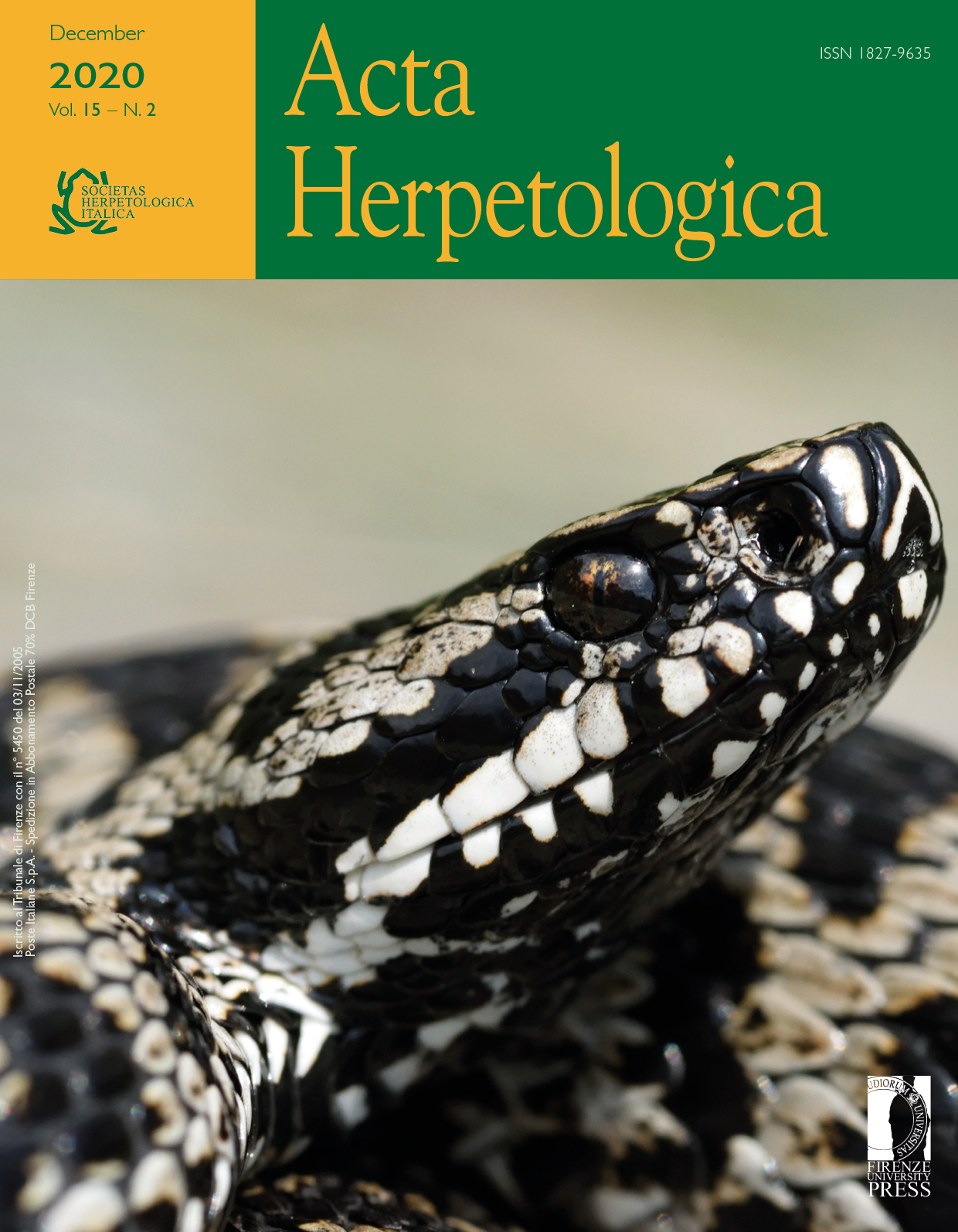Published 2020-12-21
Keywords
- Alpha-hulls,
- detectability,
- endemism,
- habitat suitability models,
- land cover
- Vipera walser ...More
How to Cite
Abstract
Recently described species suffer lack of information that hampers setting up appropriate conservation strategies. The situation is particularly complex with micro-endemic snakes, for which detection and monitoring are particularly challenging. The Walser viper Vipera walser is a recently described snake inhabiting a small area of the SW Italian alps. We combined information on species distribution with repeated monitoring to identify the areas most suitable for the species, and to obtain estimates of species abundance. Species distribution models were used to identify the topographical, climatic, and land-cover features related to the occurrence of vipers. Furthermore, repeated transects and N-mixture models were used to estimate abundance and to identify factors related to the variation of abundance. The available data suggested that the species has a disjunct range, with a Northern range of ~45 km2, and a southern range of ~225 km2. Distribution models suggested that vipers are associated with areas with open vegetation, altitude between 1300 and 2300 m, high precipitation, low forest cover, low slope, and southern aspect. N-mixture models confirmed very low detection probability of these vipers, and suggested that the species has a low abundance, with the highest abundance in south-facing plots. We provide the first quantitative information on habitats and abundance variation for Walser vipers. The broad confidence intervals of abundance estimates exemplify the complexity of providing range-wide measures of abundance for secretive species. Given the narrow range of these vipers, continuous monitoring is required to understand how they respond to ongoing environmental changes in mountainous areas.






